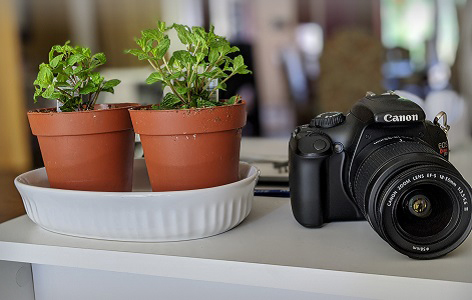
By: Tyler Saumur, ORT Times Writer
“If I could tell the story in words, I wouldn’t need to lug a camera.” – Lewis Hine
As researchers, it can often be difficult to adequately capture the feelings and experiences of our study participants. One way to do this is through photo-elicitation—a qualitative technique that incorporates art within interviews to extract deeper insights than words alone. The images used in photo-elicitation can be photographs, illustrations, cartoons or abstract images often created by the study participants. During an interview, the images serve to elicit feelings and experiences that can provide a deeper understanding of their experience and relationship with the topic under study. If done correctly, the approach can help researchers to better understand the participant’s point-of-view and gain insights into different perspectives.
Dr. Hardeep Singh, a postdoctoral fellow at the Bridgepoint Collaboratory for Research & Innovation-Lunenfeld-Tanenbaum Research Institute and the Institute for Better Health-Trillium Health Partners, used photo-elicitation during her PhD with Dr. Kristin Musselman’s SCI Mobility Lab at Toronto Rehabilitation Institute to explore the psychosocial impacts of falls and the risks of falls for wheelchair users with spinal cord injury (SCI). The team had previously used photo-elicitation to understand how risk of falls negatively affects mobility and physical activity participation among individuals with ‘incomplete’ SCI, who retain some feeling and motor function below the site of injury. The researchers chose to use photo-elicitation to address the “…need for detailed insights into the lived experiences of participants using methods that go beyond traditional approaches,” states Dr. Singh in an interview with The ORT Times.
In their most recent study, participants captured photographs related to how the risk of falls affected their ability to work and participate in recreational activities over a one-week period. Photographs included images of a laptop on a couch and the front doors of a building, with captions related to how falls and risk of falls impacted participants’ ability to work. Participants created captions for each photograph and took part in a semi-structured interview. The results revealed that concerns related to falling were dependent on the circumstances and risks associated with the fall. For example, one participant acknowledged the impact of falls as they age stating, “…as I get older…I recognize the impact that a fall would have on my life.” They also found that minimizing the risk of falls had a significant impact on the participants’ ability to engage in meaningful activities. In terms of next steps, “these findings will hopefully highlight the need to routinely assess each wheelchair user’s concern about falls in clinical practice,” comments Dr. Singh.
Whether it is used to better understand the perspectives of individuals with SCI or the experiences of individuals with different cultural backgrounds, photo-elicitation is a powerful tool that can provide insight into social class, historical ethnography, identity and culture. As Barack Obama once said, “…cultivate a sense of empathy…put yourself in other people’s shoes—to see the world from their eyes. Empathy is a quality of character that can change the world.”




